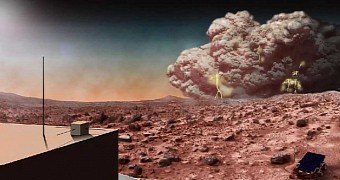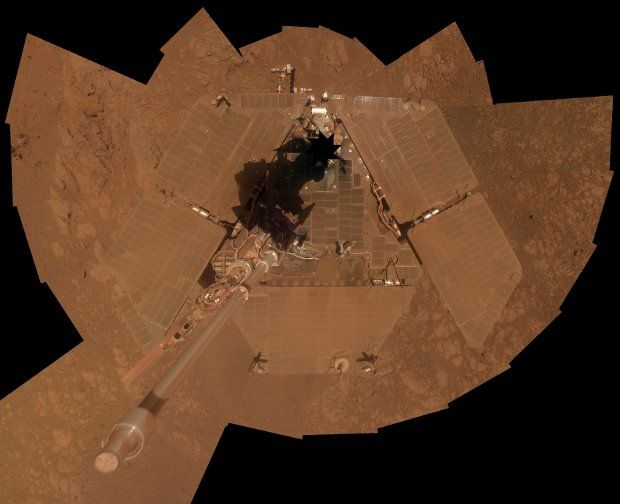Ridley Scott's “The Martian,” based on a book by Andy Weir, is set to premiere in a couple of weeks. The movie tells the story of a failed mission to the Red Planet, which ends with astronaut Mark Watney (played by Matt Damon) being left stranded on the orb following a massive storm.
The movie might be sci-fi, but the idea of mammoth storms happening on Mars sure isn't. Au contraire, several such extreme weather events have been documented on this cosmic neighbor of ours over the years, NASA scientists explain in a new report.
The Red Planet is no stranger to intense storms
Data delivered by rovers, spacecraft and telescopes used to study Mars show that, each year, several dust storms occur on the planet's surface. These storms are so intense that they engulf areas the size of continents here on Earth. What's more, they sometimes last for weeks at a time.
Then, once every 5 and a half years, one of these storms grows to be so powerful that it spreads across the entire planet. Such extreme weather events on Mars are known to scientists as global dust storms.
NASA scientists say that, being as powerful as they are, storms on the Red Planet sometimes kick off so much dust that they become visible to telescopes here on our planet. Just for the record, the distance between Mars and Earth is one of about 225 million kilometers (140 million miles).
It's still storms here on Earth that are more dangerous
As impressive as the dust storms that form on Mars every now and again might be, NASA researchers say it's still the storms that happen here on Earth that are more dangerous.
For starters, the absolute strongest Martian storms on record only packed winds averaging some 100 kilometers (60 miles) per hour. Hurricane-force winds on our planet are often twice as fast.
Besides, even if fast winds happen on the Red Planet, the fact of the matter is that, what with the orb's atmosphere being far less dense than that of Earth, they can't cause much damage.
“The atmosphere on Mars is about 1% as dense as Earth's atmosphere. That means to fly a kite on Mars, the wind would need to blow much faster than on Earth to get the kite in the air.”
In other words, the scene where astronaut Mark Watney is left stranded on Mars in the aftermath of a storm that destroys the crew's camp and even equipment isn't exactly accurate.
Still, this doesn't mean Martian storms are harmless
True, they are not aggressive enough to knock over equipment and tear through robotic probes and whatnot. Nonetheless, this does not imply Martian storms are perfectly harmless.
The dust they kick off has a habit to adhere to surfaces, and in time, it can take its toll on electronic equipment. Besides, it can coat solar panels and keep sunlight from reaching the surface of the planet, which means it's a problem for any camps we might plan to set up on Mars in the near future.
“The Spirit and Opportunity rovers landed in 2004, so they’ve only had one global dust storm to go through (in 2007) and they basically shut down operations and went into survival mode for a few weeks,” explained researcher Michael Smith with NASA's Goddard Space Flight Center.
To counter these problems, efforts are now underway to make equipment that doesn't allow dust to settle on it and cause damage. Future Mars astronauts will most definitely need such equipment.

 14 DAY TRIAL //
14 DAY TRIAL // 

